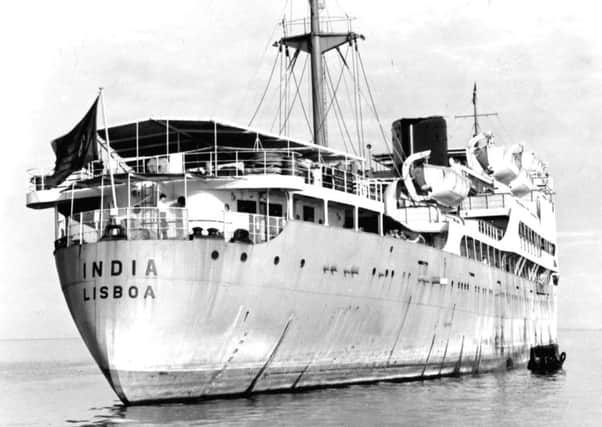ON THE WATERFRONT: The Portugese connection


Besides those fitting out, 62 vessels aggregating 420,420 tons gross were either under construction or on the order books of the port’s eight surviving shipyards.
Bartram and Sons had a particular penchant for building ships for Portuguese owners, with the South Dock yard launching 10 into the South Outlet between 1946 and 1950.
Advertisement
Hide AdAdvertisement
Hide AdBut the launching of sister-ships, India and Timor marked the end of the immediate post-war string of Portuguese orders.
Built for Companhia Nacional de Navegcao, the 7,607 ton gross twin-screw passenger cargo liner India was intended to carry passengers and freight from Lisbon to the Portuguese administered territory Macao in the East Indies.
With a maximum crew of 93, accommodation for 60 first-class passengers in luxurious surroundings and 16 third-class in comfort , facilities for unberthed voyagers were by contrast spartan, these being situated ‘tween decks where cargo could also be stowed.
While space was available for 284 white emigrants, 488 religious pilgrims travelling to Simla in northern India might be crammed into the same area.
Advertisement
Hide AdAdvertisement
Hide AdHaving an overall length of 431.8 feet and service speed of 14.5 knots, India was propelled by twin Doxford two-cycle, direct reversing, opposed-piston oil engines built by North-Eastern Marine (1938) Ltd.
With a welded hull, only the shell frames and shell seams were riveted.
After running successful trials off the North East Coast, she left Sunderland in February, 1951 to load general cargo at Ghent, before sailing to Lisbon to enter the Portugal - Far East service.
As the 7,650 tons gross Timor slid down the ways on May, 1950, Bartram’s managing director Colonel RA Bartram could be justifiably proud of his yard’s achievements.
Advertisement
Hide AdAdvertisement
Hide AdSpeaking at the time, he said: “With the launch of the Timor, we will be in the position for the first time since the war of not having a ship under construction for Portugal. I hope that the Timor will do a great deal to strengthen the long-standing friendship between our two countries.”
Portuguese Ambassador Dr Ennes Ulrich praised Bartrams for the part they had played in the rebuilding and renewing of his country’s merchant fleet after the war.
Similar to India in almost every respect and also operated on the Portugal - Far East route, Timor departed for Lisbon on June 20, 1951.
Both ships enjoyed lengthy careers, India later becoming Kim Hock and being scrapped in 1977, while Timor survived until 1984 when she was broken up under the name Kim Ann.
l The eight other Portuguese vessels launched by Bartrams in the post-war 1940s were Rovuma and Mocamedes (1946); Alcobaca (1947); Almeirim, Arraiolos, Ambrizete, Alenquer and Andulo (1948).